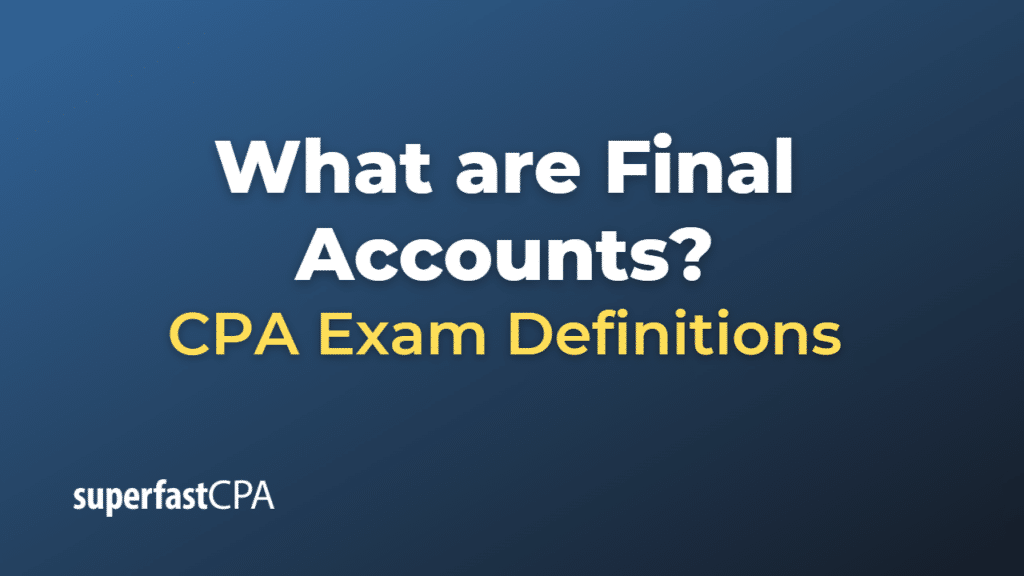Final Accounts
Final accounts, also known as financial statements, are a set of reports prepared at the end of an accounting period (typically a year) to reflect the financial position and performance of a business during that period. They are used by a variety of stakeholders, such as management, shareholders, creditors, and regulatory authorities, to make informed decisions about the company.
The primary components of final accounts typically include:
- Balance Sheet (Statement of Financial Position): This statement provides a snapshot of a company’s financial position at a specific point in time. It lists the company’s assets (what it owns), liabilities (what it owes), and equity (the ownership interest of shareholders).
- Income Statement (Profit and Loss Account): This statement shows the company’s financial performance over a specific period of time. It lists revenues earned and expenses incurred, and calculates the net profit or loss for the period.
- Cash Flow Statement: This statement provides information about the company’s cash receipts and cash payments during a specific period. It shows how the company generated and used cash in its operating, investing, and financing activities.
- Statement of Changes in Equity: This statement shows all changes to the components of equity during the accounting period, including new share issuances, dividends, and the profit or loss for the period.
In addition to these, there may be notes and disclosures that provide additional information to help users understand the financial statements. The preparation of these final accounts is guided by accounting standards like Generally Accepted Accounting Principles (GAAP) in the U.S. or International Financial Reporting Standards (IFRS) in many other countries. The accounts are typically audited by independent auditors to ensure their accuracy and compliance with these standards.
Example of Final Accounts
Let’s consider an example of the final accounts for a hypothetical company, called TechCo, for the year ended December 31, 2023.
Income Statement (Profit and Loss Account) for the year ended December 31, 2023:
- Revenue: $1,000,000
- Cost of Goods Sold (COGS): -$600,000
- Gross Profit: $400,000 (Revenue – COGS)
- Operating Expenses: -$200,000
- Net Income (Profit): $200,000 (Gross Profit – Operating Expenses)
Balance Sheet as of December 31, 2023:
- Assets:
- Cash: $50,000
- Accounts Receivable: $100,000
- Inventory: $150,000
- Property, Plant, and Equipment (PPE): $200,000
- Total Assets: $500,000
- Liabilities:
- Accounts Payable: $75,000
- Long-term Debt: $125,000
- Total Liabilities: $200,000
- Equity:
- Common Stock: $200,000
- Retained Earnings: $100,000
- Total Equity: $300,000
Cash Flow Statement for the year ended December 31, 2023:
- Cash Flow from Operating Activities: $150,000
- Cash Flow from Investing Activities: -$50,000
- Cash Flow from Financing Activities: -$50,000
- Net Increase in Cash: $50,000
Statement of Changes in Equity for the year ended December 31, 2023:
- Opening balance of Retained Earnings: $0
- Net Income for the year: $200,000
- Dividends Paid: -$100,000
- Closing balance of Retained Earnings: $100,000 (Opening balance + Net Income – Dividends)
These are simplified examples, but they give you an idea of what each part of the final accounts might look like. In a real-world scenario, each of these reports would have many more line items, and there would also be additional notes and disclosures providing further details on specific items.













